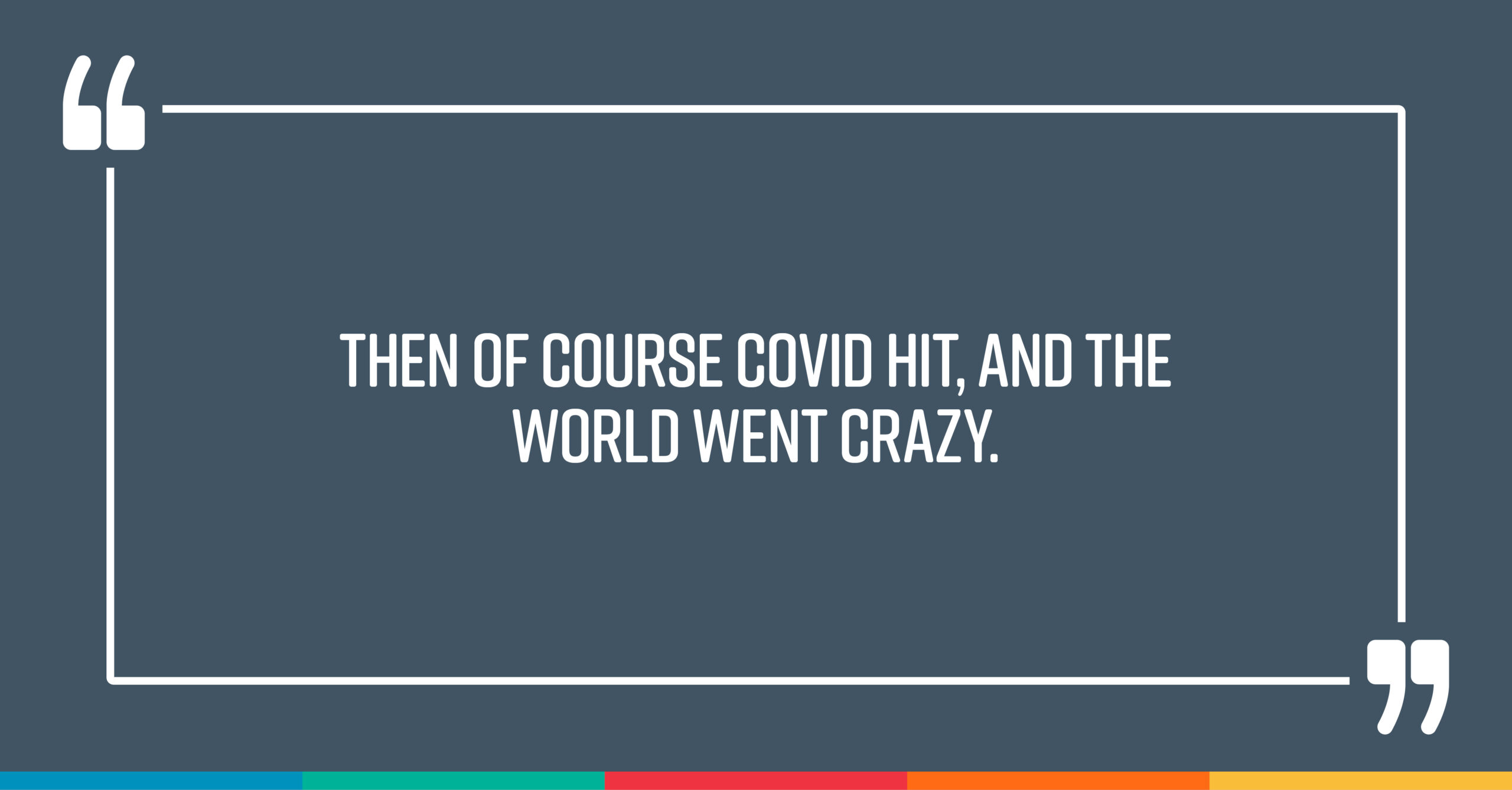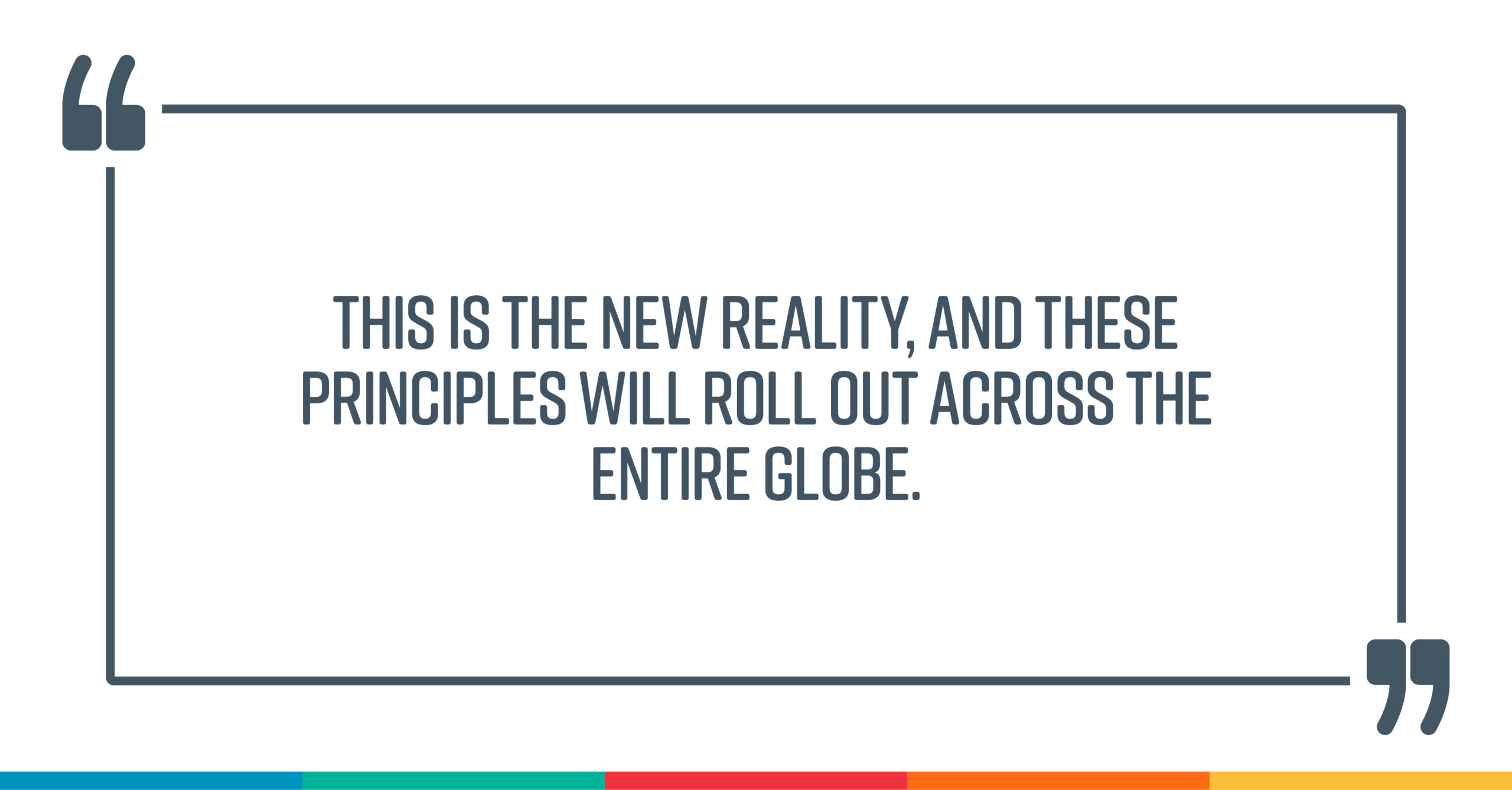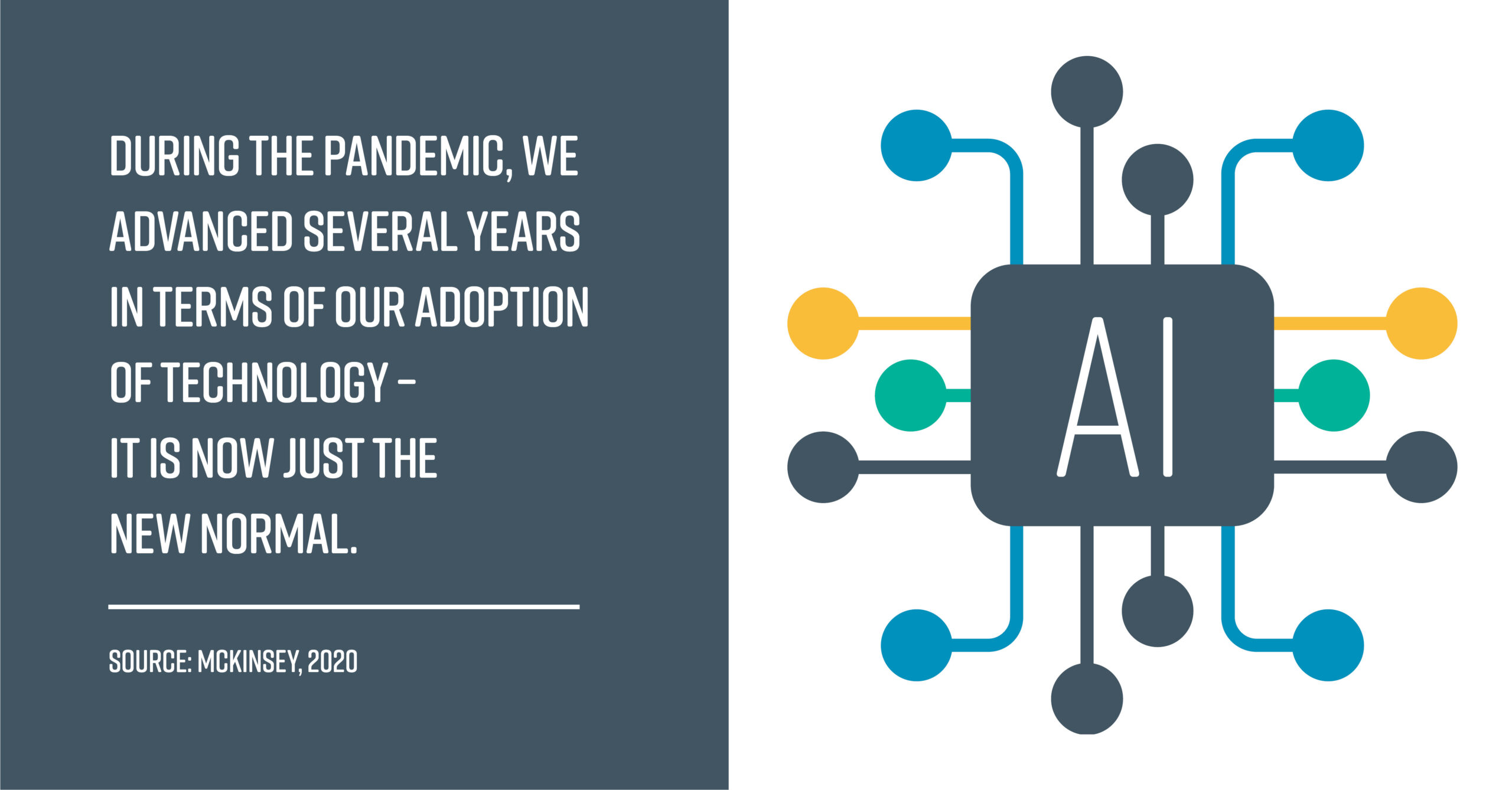Written by Jonathan O’Brien, leading procurement expert and CEO of Positive Purchasing Ltd. Jonathan works with global blue-chip organizations to help transform their procurement capability.
James Meads is a renowned expert on technological transformation in the world of Procurement and I was flattered to be invited to be a guest on “The Procuretech Podcast” recently.
James asked some thought provoking questions and, in case you didn’t catch the show, I thought I’d share his questions and some summarised answers.
James Meads: Positive Purchasing recently celebrated 20 years in business so, what would you say are some of the main changes that you’ve observed since you launched?
Jonathan: We set the business up because we were convinced the World needed and was ready to embrace sustainability in both immediate suppliers and right down their extended supply chain – and a heap of conversations with prospective clients confirmed that this was indeed the case. Though it turned out what they really wanted was someone to help them save some money, negotiate better with suppliers and/or manage suppliers more closely.
So, we did a swift 90º proposition reboot and became a business helping big global organizations be really good at procurement and negotiation. Coincidently, at the same time, switched on procurement divisions were desperately trying to transition from being tactical functions to becoming more strategic, which certainly helped our cause.
Eventually price focus changed to cost focus, then shifted to aiming to get more value from supplier relationships. We were often answering client needs such as:
- How do we get our suppliers to help us innovate and bring innovation to us?
- How do we manage risk?
Then of course COVID hit, and the world went crazy.

Whilst price efficiency will always be a key objective, today the focus is on security of supply and driving sustainability. So, we come full circle as sustainability is integral to security of supply – so I guess we were just 20 years ahead of our time!
James Meads: Negotiation training is one of the pillars of your business and right now, I think mitigating price rises is a big one – will finance ever recognize the contribution that procurement makes to negotiate away price increases?
Jonathan: Our Red Sheet® negotiation courses have never been more in demand, and it is not only from the world of procurement. Sales teams come to us for help with managing negotiations resulting from recent steep price increases in labour, raw materials and logistics, which they are forced to pass on to their customers. By the same token, procurement teams are asking for help in negotiating to mitigate these increases – we never train sales and procurement teams where they’re actually talking to each other, as that would be a conflict!
Right now, everybody is flat out trying to figure out which way is up and I’m hearing a lot of:
- We’ve got price rises and the business is putting us under pressure – how do we fend that off?
- We’ve got new sustainability legislation we have to comply with.
- We can’t get the stuff – how can we sort the supply chain out?
James Meads: What changes have you seen post COVID and how much of that do you think has been accelerated by COVID versus a more general transition away from in-person work, with digital tools becoming, slowly but surely more at the forefront of what’s driving procurement?
Jonathan: COVID has certainly accelerated change.
Historically, there was resistance to remote learning and, though we have been set up to deliver remotely since 2009, most organizations preferred to fly their teams around the World for traditional face-to-face courses.
Having already set up fully equipped online training studios before COVID was a huge advantage; we could connect our TV studios into the main desktop applications, add some of our own interactive tools and really engage with people.
It took the pandemic to really accelerate mainstream adoption of Microsoft Teams, in fact McKinsey reported that during the pandemic, we advanced serval years in terms of our adoption of technology – it is now just the new normal.
Today, most of our competitors have online capability, so to continue to stand out we have to absolutely blow people away – all delegates need their cameras on as we deliver a immersive, involving and super-engaging learning experience from start to finish.
James Meads: Elon Musk, Sam Altman and even Lord Sugar have all come out denouncing remote work – what sort of trends are you seeing? Is training set to stay online or are you starting to see people demand in-person training more as well?
Jonathan: I am finding the most recent trend is towards a more hybrid model, in fact most of our clients are now hybrid – though I appreciate this does not work in every type of business.
One consequence of the new post COVID model is the drastic reduction in travel budgets. The demise of “corporate tourism” has many benefits – better efficiency, reduced cost and positive environmental impact, though some executives are mourning the loss of loyalty miles!
That said, it is still important to conduct some meetings in-person, as there is no substitute for in-person contact for those crucial relationship building meetings or for complex and vital negotiations. The research shows that the best set-up is to meet in-person once, then hold the next meetings online and perhaps you get back together for a face-to-face in a year’s time.
Right now, we deliver about 70% of our training as live, online instructor-led training, with 30% face-to-face. Often our clients set up a global event and make three days of that, one of our courses.
James Meads: We always joke that we spend other people’s money, but we don’t have a budget to do anything ourselves. How do you see the conversation around getting budget both for training and for digital transformation – how do I convince my CFO?
Jonathan: It depends how the organization sees procurement. If procurement is the function that just buys stuff, and if the CFO is the decision maker, then the business case must be – we need to invest “A” to deliver or facilitate a return of “A” x 100. Procurement can sometimes struggle to articulate this, and most businesses are run on these kinds of hard metrics.
The more entrepreneurial business approach is to say, “If we do this thing, it’s going to bring this value and the finances will take care of themselves.” That’s quite a frighteningly alien concept to most organizations, however it is how the likes of Apple work, where once a genius said, “Let’s put a thousand songs in somebody’s pocket…”
Procurement can – and should – be the transformational enabler of future success in a visionary organization. We know that procurement plays the lead role in terms of driving sustainability in the supply chain, but increasingly, building significant competitive advantage can come from the supply base.
James Meads: You’ve authored five books – could you walk us through what each of those five are?
Jonathan:
- Category Management in Purchasing, which covers how you do category management and is now taught in universities all around the world.
- Supplier Relationship Management, explores how you drive more value from supplier relationships.
- Negotiation for Procurement and Supply Chain Professionals, details the Red Sheet negotiation process that guarantees better negotiation outcomes.
These three are designed as a strategic trilogy and, if you do them all well, you’ll be knocking strategic procurement out of the park!
- Sustainable Procurement, a playbook of how you drive sustainability across your organization, your entire supply base and even your customers (and integrates with the other three above).
- The Buyer’s Toolkit, which is a distillation of all the others, so even if you don’t know procurement at all, it gives you a toolkit for really good buying.
James Meads: When it comes to the prospect of digital technology disrupting and revolutionizing an existing process, which of those are you the most excited about in terms of what technology could do in an ideal world?
Jonathan: Category Management, because it’s the key strategic approach to maximize value for what you buy. Lately, I hear people asking – what’s going to replace Category Management in the digital world? The answer is simple – nothing. Nothing will replace it – however a new generation of digital tools will transform how we apply Category Management to deliver even greater effect.
And I am beyond excited to say we are about to launch a digital tool – Capella – that does just that!
Capella combines artificial intelligence with the traditional Category Management process to interrogate your circumstances and objectives, then guides you to an optimal category strategy.
James Meads: Your most recent book is about Sustainable Procurement. Are we perhaps approaching sustainability the wrong way? Do we just need to make sure that we’ve got all of our P2P and all of our more transactional processes automated, which in turn will free up the white space to get our heads around how we approach sustainability? Will it even be managed completely by procurement?
Jonathan: Freeing up time to work on sustainability won’t change very much at all. It’s about having the tech and crucially, the data to drive sustainable procurement. We need to fully understand what we buy, who we buy it from and then get really close to our suppliers.
Granular understanding of our entire supply chains involves many contractual steps through different geographies and via intermediaries who may be desperate to hide what happens upstream.
Up until now, we’ve never really needed to do this, but the new supplier due diligence legislation in Germany (that is likely to become legislation across Europe) is changing, so big organizations will soon be responsible for everything that happens in the supply chain.
This is the new reality, and these principles will roll out across the entire globe. Not only must we understand all of the entities in our supply chain including what they do, who is employed and what the processes are, but now we must also know how much carbon they’re producing as we will pay for it at some future point in time.

So, from a farmstead in an underdeveloped country, to an original factory or an original mine we can audit relative sustainability and can start measuring things like carbon generation. However, areas like human rights, attitudes towards gender equality, working hours and if children are employed, are challenging to accurately evaluate, so acquiring accurate data is key.
Companies like EcoVardis are starting to do this with their assessment system and, though it’s still quite early days, it’s a promising start because we can now access information about suppliers and that data will progressively build. The future is moving away from remote assessments towards first-hand, real-time data about what is happening at any point in the supply chain.
James Meads: You mentioned Capella, which is your category strategy management tool – what are the other SaaS tools?
Jonathan: We’ve pivoted in the last seven years and now we’re a strong player with an exciting suite of digital products:
- Our Procleus® ecosystem is our strategic procurement platform giving access to processes, tools, and resources to optimise Category Management, Supplier Relationship Management, Negotiation, and Sustainable Procurement. It provides access to a vast e-learning library, where we’re coupling process with digital learning, because you can’t really learn about strategic procurement unless you have a process to follow. Additionally, there are assessment tools to enable you to evaluate the capability of a procurement function, identify any gaps, then develop tailored learning programs within the Procleus environment.
- Capella is a guided category strategy creator® which will guide you to a strategic category strategy. You can either sit back and let it do the work or you start working the tools yourself within the embedded 5i® methodology.
- Ruby is our guided negotiation plan creator®. Using the Red Sheet negotiation methodology, we guide you through the creation of a detailed negotiation plan that you and a distributed team can then go and use.
- Buyers Toolkit is a guided approach to developing a simple buying plan for diverse areas of spend. It’s not aimed at the professional procurement community, rather, it is a tool that is guaranteed to make anyone a better buyer.
We’re really proud of our selection of SaaS tools, which will undoubtedly be the biggest growth area for us going forward.
Coming back to training, we are seeing a huge shift towards an avatar based, multi-language requirement, which is also good for us as we’ve got probably the biggest body of digitally available training content of any provider out there, available in several languages.
James Meads: Wrapping extensive an content library together with other SaaS tools that you have within your ecosystem is very joined-up thinking, especially if you’re using best of breed tools. So, Jonathan, if anyone would like to learn more about any of the tools that you offer or your training programs, or your books even, where should they reach out?
Jonathan: The best place to go is: https://positivepurchasing.com or https://redsheetnegotiation.com if it’s negotiation you’re after. You can search for my podcast – which you’ve been on James at: https://positivepurchasing.com/podcast-the-procurement-show/ or you can connect with me on LinkedIn, and I’ll be really happy to engage with you.


